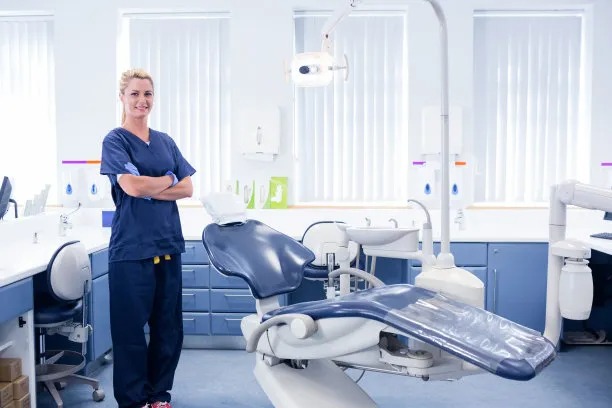The Essential Guide to Safely Extracting a Tooth and Promoting Healthy Dental Practices
Summary: Extracting a tooth, while sometimes necessary, can be a daunting experience for many. This article serves as a comprehensive guide to safely extracting a tooth while emphasizing the importance of promoting healthy dental practices. We will explore essential pre-extraction preparations, the extraction process itself, aftercare for a smooth recovery, and the promotion of overall dental health. Each section is designed to equip readers with knowledge that not only ensures safety during a tooth extraction but also highlights best practices for maintaining dental hygiene. By understanding the intricacies of tooth extraction and subsequent dental care, individuals can foster a healthier mouth and reduce the need for future extractions.
1. Essential Preparations Before a Tooth Extraction

Before attempting a tooth extraction, it is vital to evaluate the situation comprehensively. Consulting a professional dentist should always be the first step. They can examine the tooth and the surrounding gums to determine if extraction is necessary and if its safe to proceed. Accurate diagnosis through X-rays can also help in understanding the tooth’s root structure and its relation to nearby teeth.
Another crucial preparation involves gathering the necessary tools. Whether you are a dentist or attempting a DIY extraction (which is strongly discouraged), you will require sterilized tools like forceps, a dental elevator, and antiseptic solutions. Ensuring everything is sterile is vital to prevent infection. Furthermore, ensuring that the patient is comfortable and aware of what to expect can significantly reduce anxiety, which is essential for a smooth procedure.
Additionally, understanding the different types of anesthesia is important for pain management. Local anesthesia may be sufficient for simple extractions, while general anesthesia might be needed for more complicated procedures. Discussing these options with the dentist ensures that a proper method is chosen for each individual, enhancing comfort during extraction.
2. The Tooth Extraction Process Explained
The extraction process begins once all preparations are in place. The first step involves administering the chosen anesthesia to ensure the area is numb. This step is essential to minimize discomfort and pain during the extraction. It is important for the patient to communicate any feelings of pain or discomfort during this time.
Once the anesthesia takes effect, the dentist will gently loosen the tooth using a dental elevator. This tool helps break down the connective tissue around the tooth, paving the way for extraction. Following this, forceps are used to firmly grasp the tooth, allowing for a gradual rocking motion to dislodge the tooth from its socket.
After successfully extracting the tooth, the dentist examines the area for any remaining fragments and checks for excessive bleeding that can occur. They may apply stitches if necessary to help with healing. Understanding and properly executing each step minimizes complications and enhances the safety of the procedure.
3. Aftercare for a Smooth Recovery
Post-extraction care plays a crucial role in ensuring a smooth recovery. The first step is to bite down gently on a gauze pad placed over the extraction site. This helps control bleeding and encourages clot formation. Patients should regularly change gauze as needed, generally every 30-45 minutes, until the bleeding subsides.
It is advisable to avoid strenuous activities and remain resting for the first 24 hours after the procedure. Physical exertion can lead to increased bleeding and complications. Additionally, patients should refrain from using straws, as the suction can dislodge the clot and lead to dry socket, a painful condition that prolongs recovery time.
Dietary modifications during recovery are also important. Soft foods and plenty of fluids should be consumed to avoid irritating the extraction site. Moreover, maintaining oral hygiene is essential, but care must be taken to avoid brushing the extraction site directly for at least 24 hours. Warm saltwater rinses can be introduced after a day or two to promote healing.
4. Promoting Overall Dental Health
Promoting dental health goes beyond just addressing tooth extractions. Regular check-ups with a dentist are crucial in preventing dental issues before they require extensive procedures. Dentists can provide valuable insights into dental hygiene practices that can help maintain healthy teeth and gums.
Incorporating a balanced diet rich in vitamins and minerals is essential for dental health. Foods high in calcium, such as dairy products, and those rich in Vitamin D can strengthen teeth and prevent decay. Hydration also plays a role, as it helps maintain saliva production, which naturally protects against oral bacteria.
Lastly, cultivating good oral hygiene habits is vital. Daily brushing and flossing, along with the use of mouthwash, can significantly reduce the risk of dental issues. Individuals should also be encouraged to limit sugary snacks and drinks, which can contribute to cavities and gum disease.
Summary:
Understanding the processes involved in tooth extraction and subsequent care is essential for maintaining dental health. The article outlines critical preparations, the extraction process, aftercare, and promoting overall dental hygiene. By adhering to these principles, individuals can minimize the risks associated with tooth extraction and foster a proactive approach to dental health.
This article is compiled by Vickong Dental and the content is for reference only.



